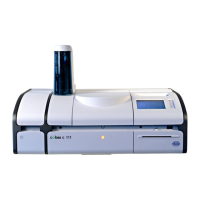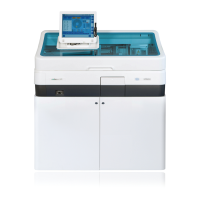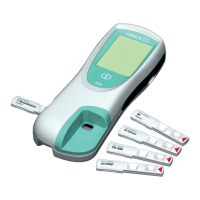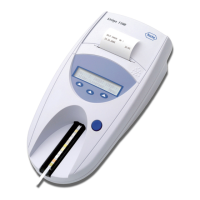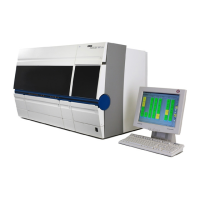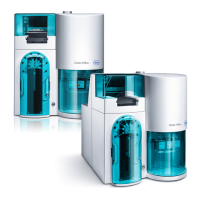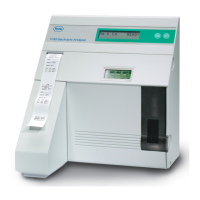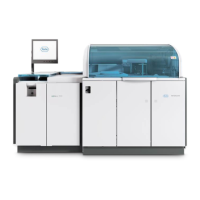
Do you have a question about the Roche cobas c 513 and is the answer not in the manual?
| Type | Clinical chemistry analyzer |
|---|---|
| Sample Types | Serum, Plasma, Urine |
| Calibration | Automated calibration |
| Quality Control | Automated quality control |
| Dimensions | 1200 mm (W) x 850 mm (D) x 1200 mm (H) |
| Power Requirements | 100-240 V, 50/60 Hz |
| Connectivity | LAN |
| Operating Temperature | 15 to 30 °C |
| Operating Humidity | 20 to 80% relative humidity |
Details changes across publication versions.
States the publication is for users and efforts to ensure accuracy.
Guides users to different sections like Safety Manual, Operator's Manual, e-library.
Essential safety advice to read and follow before using the system.
Explains the safety alert symbol used for potential physical injury hazards.
Indicates a hazardous situation that could result in death or serious injury.
Indicates a hazardous situation that could result in minor or moderate injury.
Indicates a hazardous situation that could result in system damage.
Indicates additional information on correct use or useful tips.
Ensures operators know safety guidelines, standards, and procedures.
Emphasizes wearing appropriate personal protective equipment.
Unauthorized access can lead to data breaches; implement controls.
System security depends on password protection; never disclose passwords.
Be aware of hazardous areas and wear PPE to minimize injury risk.
Incorrect results can occur due to contaminants in reagents or samples.
Insufficient washing can cause carryover; perform maintenance as scheduled.
Using the system without QC may cause incorrect results; perform QC before use.
Contact with waste may result in infection; use PPE and follow procedures.
Abnormal status can lead to injury or system damage; switch off and contact service.
Damaged touchscreen can expose sharp edges causing injury; do not touch if damaged.
Contact with reagents can cause skin irritation or burns; use PPE and follow MSDS.
Alcohol is flammable; keep ignition sources away and use limited quantities.
Incorrect use can cause loss of results or system error; use correct format and remove safely.
Extended monitor use can lead to eye strain or fatigue; take breaks.
Exposure to heat can invalidate reagents and results; avoid heat sources.
Improper use of circuit breakers or fuses can damage the system.
Strong fields can interfere with operation and cause malfunction.
Wireless devices in the analyzer may lead to malfunction; do not leave them inside.
System has emergency stop button in software and circuit breakers on sampler unit.
Locations of main circuit breakers for AU/SU and CU.
Warning labels draw attention to potential hazards; definitions and standards are listed.
Potential hazards may lead to death or serious injury; refer to user documentation.
Indicates potentially biohazardous materials are used near this label.
Danger of contact with corrosive material; wear PPE.
Explains analyzer has laser barcode readers and their classification.
Describes barcode readers as Class 1 laser products.
Warns about eye damage from intense laser light; do not stare into beam.
Treat instrument as infectious waste; decontamination required before disposal.
Cooling unit contains fluorocarbons; dispose via designated collection facilities.
WEEE symbol indicates disposal through designated collection facilities.


